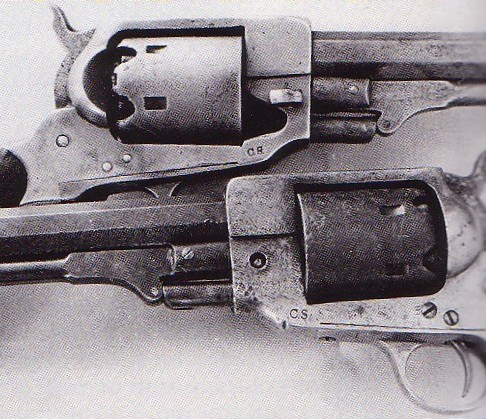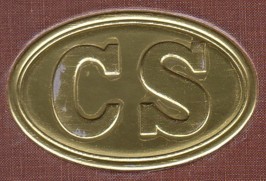

|
Georgia-made revolvers
|
THE SPILLER & BURR REVOLVERS
Spiller & Burr
Rare Spiller & Burr Confederate revolver with clear Spiller & Burr name on barrel and correct C.S. on frame.
Thanks to "COLLECTORSFIREARMS" for the pictures
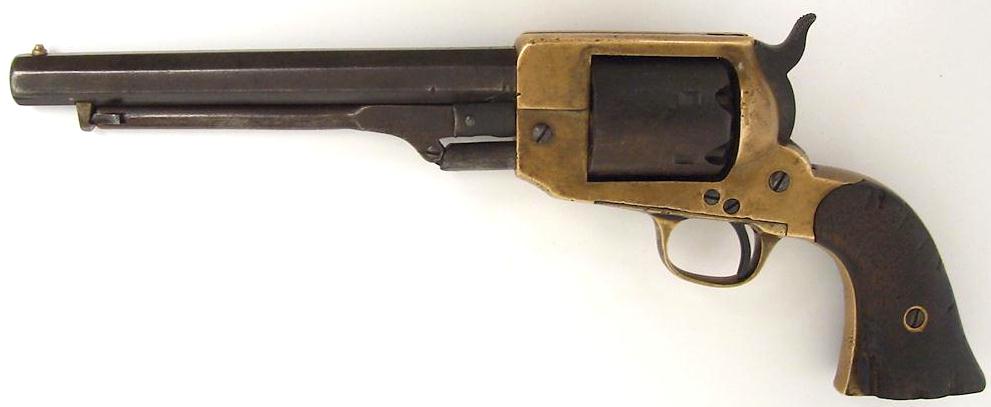
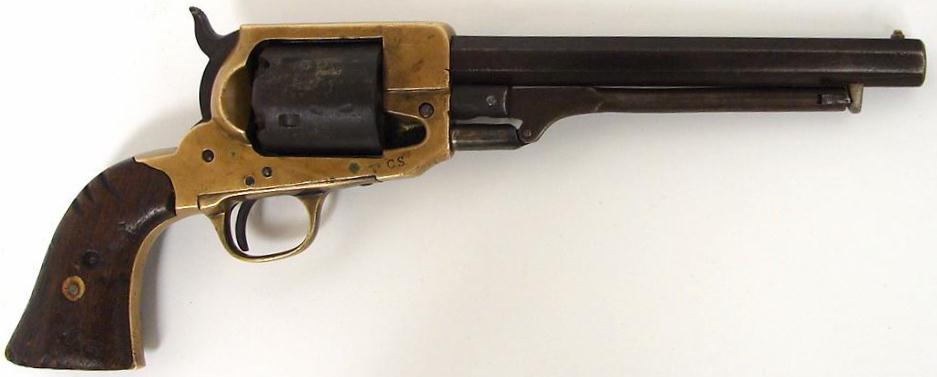
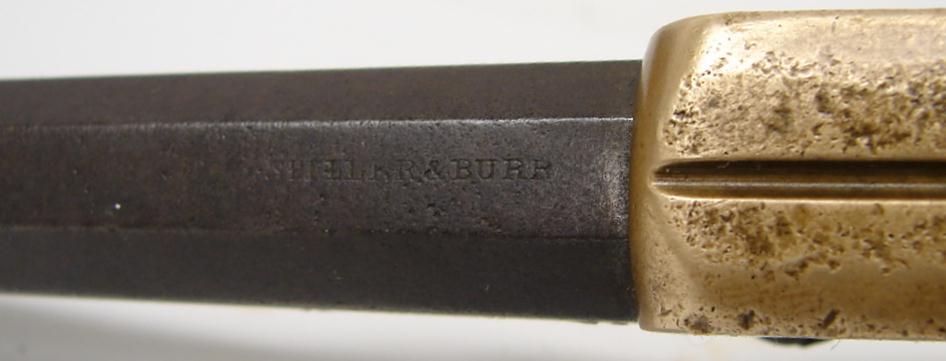

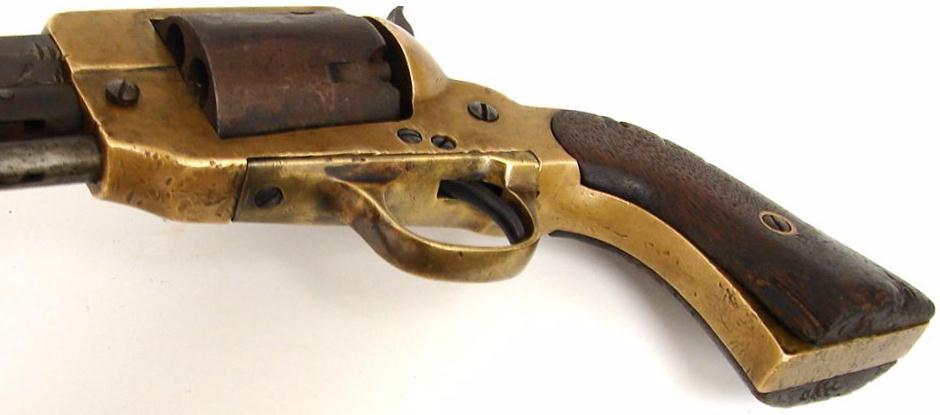
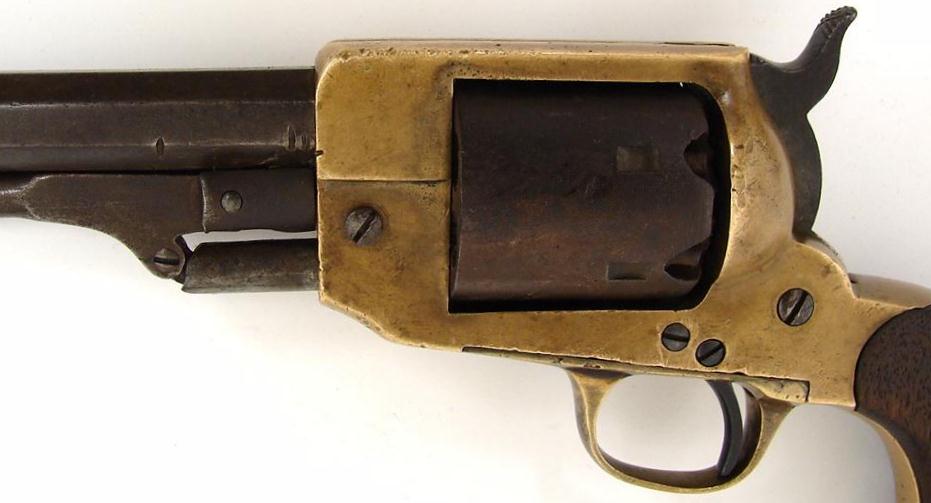
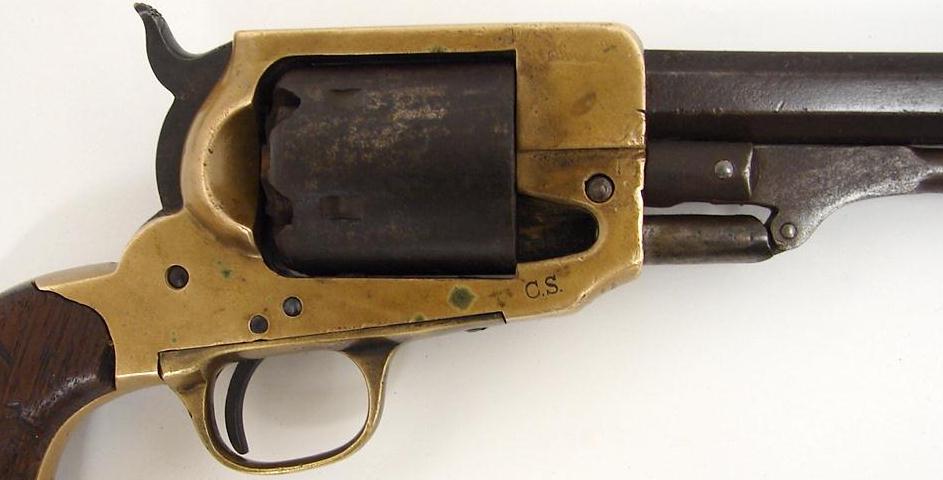
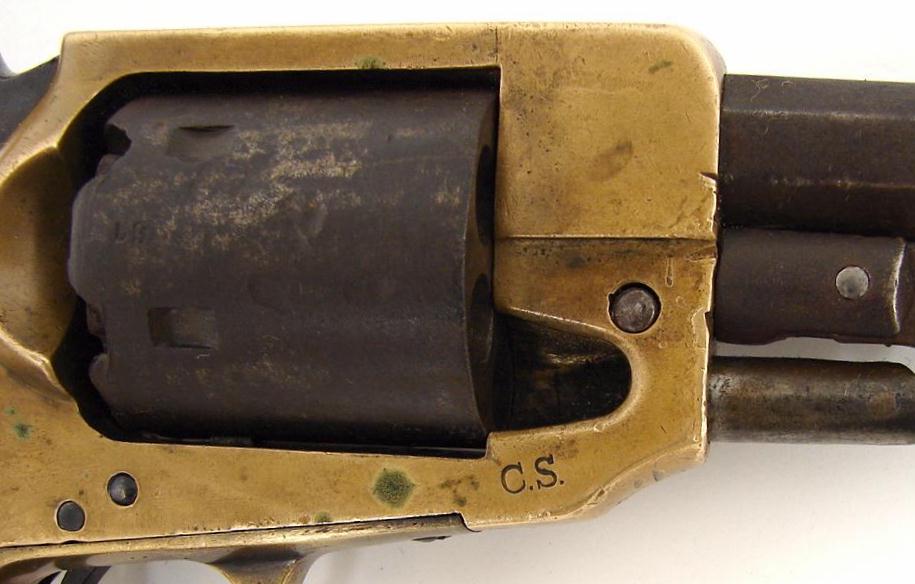

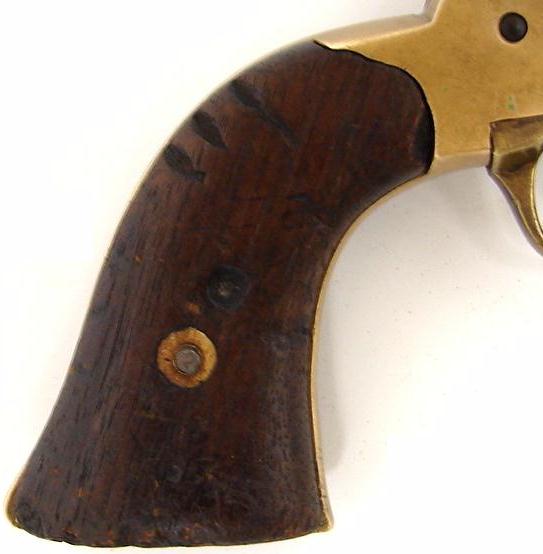
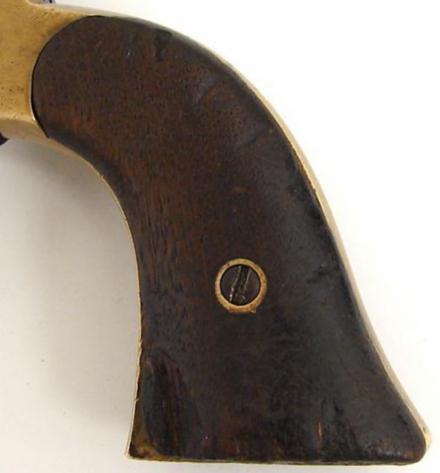
The Spiller & Burr Company was the third most prolific producer of handguns in the Confederacy.
Edward N. Spiller ran a commission business in Baltimore, Maryland, and moved to Richmond, Virginia when the war began, because of his southern sympathies. David J Burr, a native of Richmond, had been for a long time a maker of steam engines in that city.
The two businessmen went into a venture with a third party, James H. Burton, lieutenant-colonel in the Confederate army and Superintendent of Armouries CSA.
Burton was undoubtedly a leading authority on the field of arms manufacturing in the Confederacy, and probably in the USA. He had formerly been Master Armourer at Harper's Ferry and also Chief Engineer of the Royal Small Arms Factory of Enfield, England.
The three men entered into an agreement on Nov 20, 1861, for the production of 15,000 revolvers for the Confederacy. Burton was to secure the contract from the government, prepare the machines and tools for making the guns.
The company secured a contract for 15,000 revolvers of .36 calibre, on the Colt Navy 1851 pattern. The exact reason why the guns turned out to be on the pattern of the Whitney before production had started is unknown. Maybe the partners thought that a cast brass frame would be easier to make and cheaper than the Colt-type frame with separate blackstrap; they also could have wanted to avoid the weakness of an open-top Colt frame.
The company bought the machines and plans of the Robinson Revolver Factory of Richmond, including a contract for the production of revolvers on the Whitney pattern. That could also be a reason for the change.
The Robinson Factory went on with the production of carbines for the cavalry, which are known as the Robinson Sharps.
On May 27, 1862, Burton was relieved of his command at Richmond and sent to Georgia to create an armoury. That change caused the Spiller & Burr Company to move out to Atlanta. The first revolvers were finished at Atlanta, and a small number, probably not more than 15, was delivered to the War Department.
THE FIRST MODEL
Few people know there are two models of Spiller & Burr, and two versions of the first model. The very first version is a close copy of the Whitney revolver, except that its iron frame has been brass-electroplated. It has an open space between the face of the cylinder and the forepart of the frame. The barrel is screwed into the frame, and passes through at the inside, so that the threads are visible like on a Remington of the same era.
Those first revolvers were inspected by Major W.S. Downer, who recommended the following changes:
- A solid brass frame would be preferable to a plated one
- The ball catch system to the loading lever should be discontinued and replaced by a spring and catch similar to that of the Colt
- Slots should be cut in the shields between the nipples, where the head of the hammer could fit in to block the cylinder
- The bore, that was slightly smaller than .36, should be brought to the proper calibre.
Today there is only one revolver of the very first model known in the world. (The upper one on photo 1). It bears serial # 13. The one below on the same picture bears serial # 23 and has all the changes demanded by Major Downer. It is also the only one of that kind known in the world today.
The company did not deliver any revolver anymore, until the spring of 1863. At that date, 40 revolvers were finished and delivered to Burton at the Macon Armoury. It is assumed that those 40 guns were of the first model, but with the changes ordered by Downer.
Unfortunately, 33 of these guns were rejected after testing, and sent back to Spiller & Burr. They are reported to have been damaged beyond repair, the most top straps having been bulged due to the heavy explosion of powder in the chambers. The 7 remaining revolvers were accepted, and serial # 23 is one of them.
That failure prompted Spiller & Burr to find a way to strengthen the frames of their revolvers, and this lead to the production of the second model.
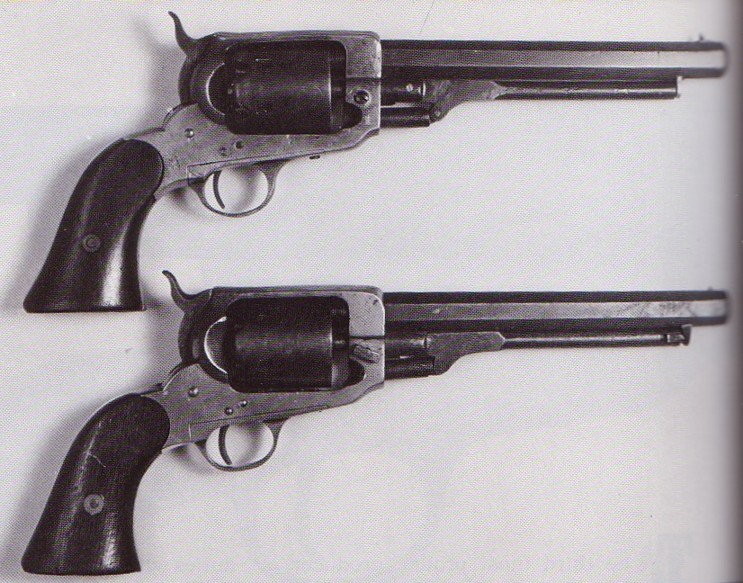
THE SECOND MODEL
It appears certain that all revolvers produced after the incident of the rejection, were of the second model. The frame had been reinforced in the forepart, so that there ware no threads visible anymore and the thickened front of the frame fills in the open area that existed on the first model. This is the typical Spiller, known of all collectors.
The reinforcement of the frame did not help very much, for many revolvers are known with bulged top strap.
The serial numbers on the second model start from 1. The cylinder, loading lever assembly and trigger guard are interchangeable with a Whitney and there is no perceptible difference between the two. (Note: on the Union side, the same was done on about 1,000 Whitney copies produced by Marston).
For an unexplained reason, the barrel lengths on the Spiller & Burr vary from one gun to another, being anywhere between 6 and 7 inches. It has 7 lands and grooves that can be either clockwise or counter clockwise, with a gain twist.
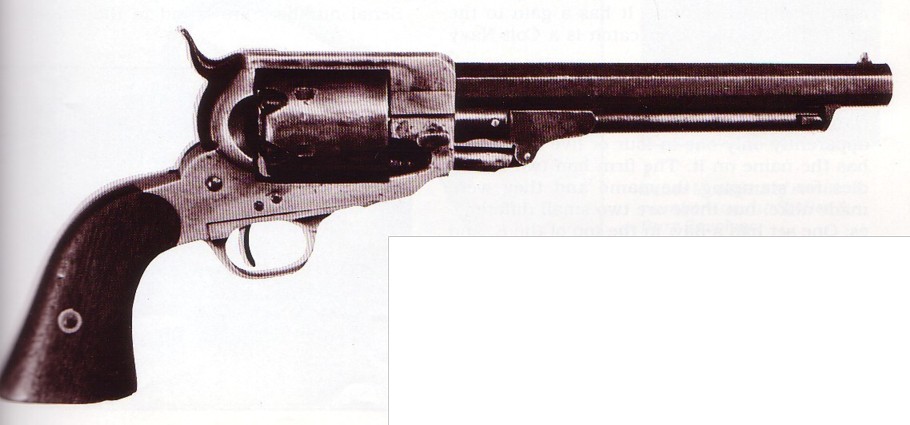
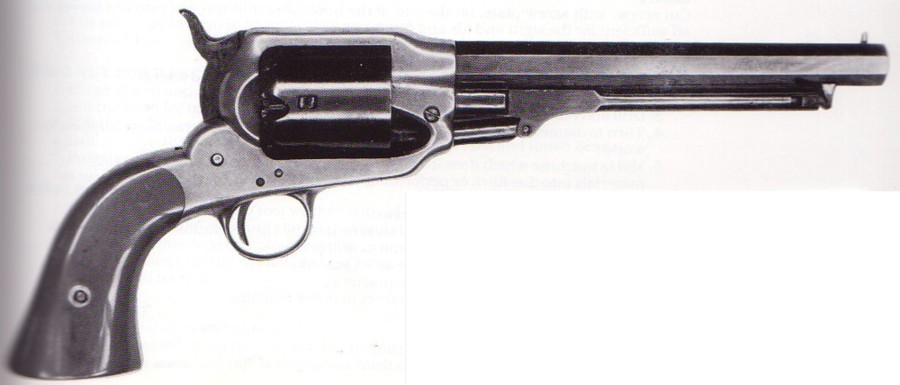
It seems like only one revolver on five or six was marked with the company's name. Two different sets of dies were used, and only half of all the revolvers produced, were marked C.S. on the frame, either on the left or on the right side. Serial numbers are stamped in many places on the revolvers; three different sets of dies were used concurrently to stamp the serial numbers. (Photo 4)
The frame is of cast brass and its colour can also varies from yellow to rose due to excessive copper content in the used alloy, like on the Griswold & Gunnison.
Also like on the Griswold, twisted iron bars were used to make the cylinders, but the twist lines are visible on a few revolvers only, and they always run the opposite direction of a Griswold & Gunnison.
Two very rare specimens are known with rounded edges on the brass frame (Photo 3). The photo shows serial n° 1076, that also has gutta-percha grips. Serial number 1169 has also rounded edges but standard walnut grips.
Most Spiller & Burr revolvers were issued to the Army of Tennessee and have been used in the western theatre of the war.
Discouraged by the problems they encountered, Spiller & Burr offered the Confederate States to buy out their company in June 1863, but that was refused. So they continued to manufacture until January 1864, when the Confederate government finally bought out the company. Machines and tools were then moved to Macon, Georgia.
According to the records, Spiller & Burr would have delivered a total of about 840 revolvers until January 7, 1864. After the government took over, 400 more revolvers were completed, making a total of approximately 1,250. Quite far from the previously contracted 15,000 pieces....
The Sherman threats to Macon caused the factory to close its doors in December, 1864. Machines were dismantled and shipped away, and the production was never resumed.
Marcel
